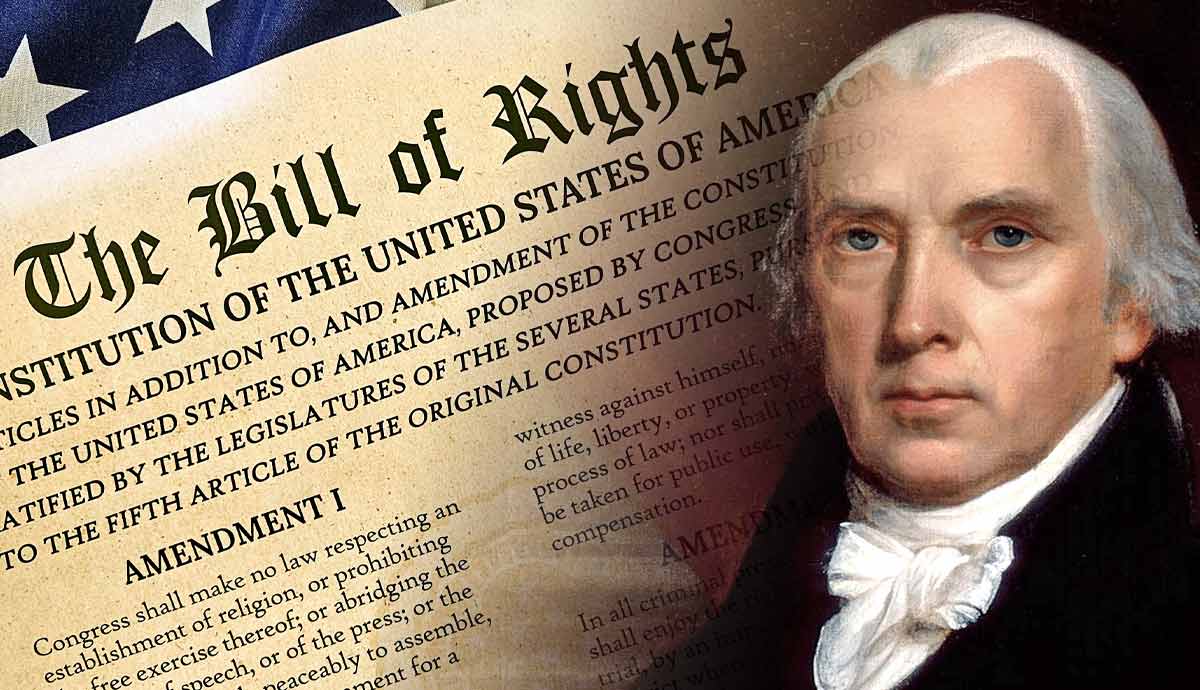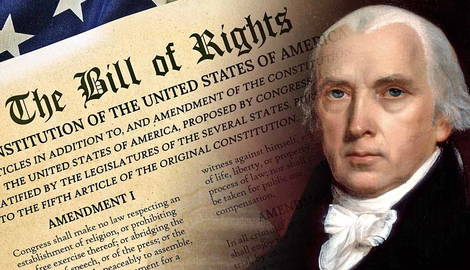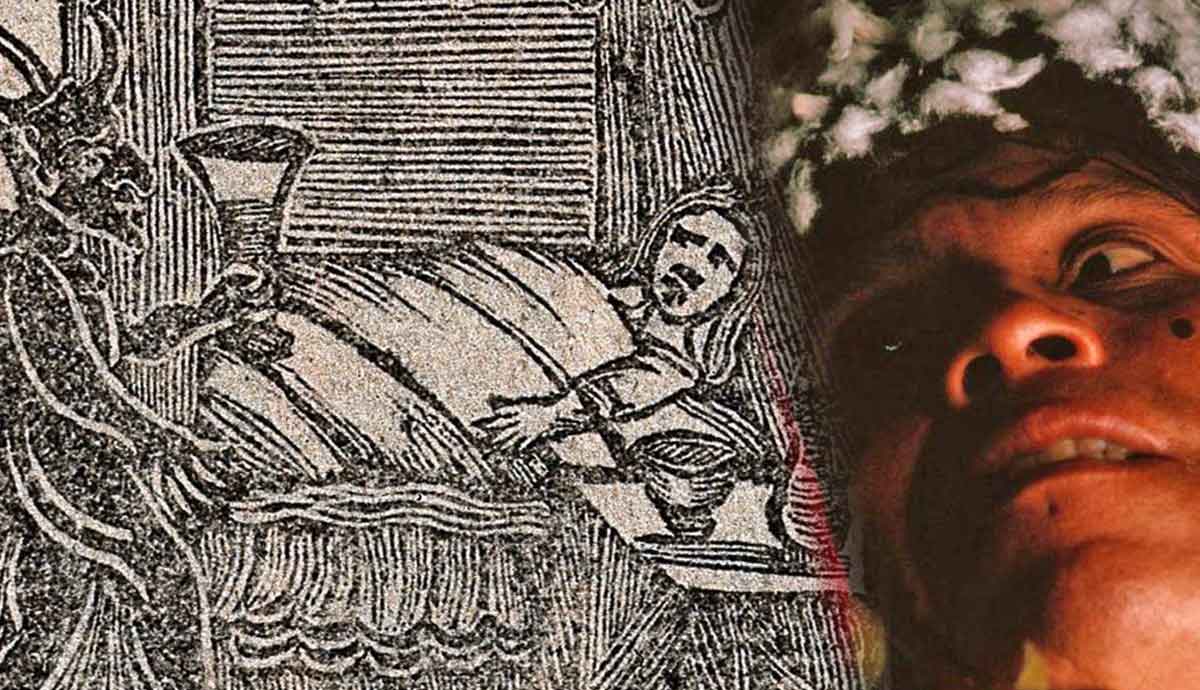
Proposed by James Madison and crafted in response to concerns about federal overreach, the Bill of Rights, or the first ten amendments to the US Constitution, was a testament to the new nation’s commitment to safeguarding individual freedoms. The Bill of Rights shapes political and legal discourse but, most importantly, outlines essential liberties such as freedom of speech, religion, and the right to fair trials.
Origins and Purpose

Like many of the nation’s founding documents, the US Bill of Rights resulted from a compromise. When a significant divide emerged among the state delegates who gathered in Philadelphia in 1787 to draft the new United States Constitution, it became apparent that the document would not go into effect unless a compromise was proposed and adopted.
Anti-Federalists, led by the prominent Patrick Henry of the “Give Me Liberty, or Give Me Death” speech, opposed the new Constitution on the grounds that it lacked explicit protections against the government overreach or infringement on individual rights. They contended that without a specific Bill of Rights, the new government would become tyrannical, echoing the recent struggle against British oppression of the colonies.
James Madison, the author of the Constitution, and his followers, known as the Federalists, strongly opposed the assumption that the federal government would abuse its power. American historian Eric Foner points out in his Give Me Liberty (2009, p. 254) how Madison was so convinced that the Constitution’s built-in checks and balances would protect liberty that he believed a Bill of Rights was “redundant and pointless.”
Still, although skeptical, Madison realized that the Anti-Federalist arguments resonated more with many former colonists and thus agreed to a compromise. Once the two sides agreed that the Anti-Federalists would not stand in the way of ratification in return for a Bill of Rights, Madison set to draft the first ten amendments Congress would ratify as one of its first duties after the Constitution went into effect.
Ratification

Madison initially proposed nineteen amendments in June 1789, shortly after the formation of the first Congress. The new House of Representatives member set out to address a wide range of issues that protected personal freedoms and limited the federal government’s power. Although they provide for free speech, religion, and press, and against unreasonable searches and seizures and unfair trials, they seemed too repetitive. After the House slashed them down to seventeen in number, they were further changed, combined, and refined by the Senate down to twelve.
The twelve amendments were then sent to the individual states with the Constitution requirement of three-fifths of the states (or, at the time, 11 out of 14) having to ratify them for the articles to become part of the law of the land. While many states looked favorably at the amendments, those in the North with strong Federalist sentiments did not. Massachusetts and Connecticut were quick to refuse, and it would not be until Virginia ratified them in December 1791 that what would eventually be called the Bill of Rights achieved the necessary state support for adoption. Even then, the last two amendments dealing with congressional pay and the number of constituents for each representative did not receive enough votes and were dropped from the proposed package.
The United States Congress officially adopted the Bill of Rights on December 15, 1791, marking the first ten additions to the American Constitution. The Bill of Rights would become the fundamental element of American law and government for centuries.
Content and Context

As initially intended, the first ten amendments quelled some of the fear stemming from colonial time abuses under British rule, and some today, on the surface, may seem less relevant than others. The First Amendment grants the freedoms of religion, speech, press, assembly, and petition—the very sort of governmental suppression experienced before and during the Revolutionary War. Although initially skeptical about the need for the Bill of Rights, Thomas Jefferson and James Madison were always inclined to pass a provision in the Constitution to protect the rights for which the British made them outlaws during the war when they spoke against the Crown’s abuses.
The Second Amendment, or the right to bear arms, was heavily influenced by the English Bill of Rights of 1689. It set up the same protections against a tyrannical government by allowing men to protect themselves from its abuses. Similarly, it provided for a stable and armed militia to be called upon to preserve the same government the amendment was meant to keep in check.
The Third Amendment, and less significant today than at the time of its ratification, deals directly with the British Quartering Act during the Revolutionary War, which forced the colonists to open their doors and food stockpiles to Red Coat soldiers—now preventing such abuses from ever happening again.

The Fourth Amendment protects individuals from unreasonable searches and seizures. Like the other ones before it, it exists due to British abuses before the war. In this case, it was the resentment against “writs of assistance,” or broad search warrants used by the British tax collections to combat smuggling.
The Fifth Amendment deals with the rights of the accused and encompasses a few fundamental principles of the English common laws. As many colonists found themselves arrested without due process or proper accusation, the amendment guarantees that the government cannot deprive a person of life, liberty, or property without due process of law. In other words, the government is required to follow pre-set constitutional procedures. The amendment also protects against double jeopardy, self-incrimination, and property seizure.

The next three amendments deal with trial and punishment. The Sixth Amendment, or the right to a fair trial, addresses the colonists’ experiences of being transported back to England for trials and the subsequent delays in legal proceedings and biased local courts. The amendment also states that the accused must be provided with legal counsel. In the 1963 Gideon v. Wainwright case, the Supreme Court ruled that if the defendant cannot afford one, the government must provide one. Clarence Earl Gideon was accused of breaking and entering a pool area in Florida. Unable to afford an attorney, he requested one from the law, but since Florida law only provided attorneys for indigent defendants in capital cases, he was forced to defend himself. The Supreme Court overturned Gideon’s conviction in Gideon v. Wainwright.
The Seventh Amendment reflects the high value the former colonists placed on the jury system as a safeguard against government abuses, guaranteeing a jury of peers trial in all civil cases.
The Eighth Amendment bans excessive bail, fines, and cruel and unusual punishment and, like the Second Amendment, borrows from an already existing provision within the English Bill of Rights.
The purpose of the Ninth Amendment was to prevent the federal government from claiming that the Bill of Rights is all-encompassing of every right that the American people possess. Madison framed it as a catch-all, ensuring that people have other rights besides the ones listed, and just because a specific right is not spelled out in the Bill of Rights does not mean it does not exist.
The Tenth Amendment clarifies the principle of federalism that served as the core of the entire Constitution by asserting that any power not explicitly given to the federal government nor prohibited to the states was reserved to the states or the people. Thus, the amendment marks another level of the separation of power, this time between the central and state governments.
Impact and Interpretation

By directly spelling out such freedoms as speech, religion, and the right to a fair trial, the Bill of Rights has provided a framework for centuries that guards individual liberties against government infringement. That does not mean that as time has evolved since their ratification, the amendments have been immune to modern interpretations, additions, or clarifications.
Most notably, Miranda v. Arizona of 1966 established Miranda rights under the Fifth Amendment. Then, in 1973, Roe v. Wade (although later overturned) used the Fourth Amendment right to privacy in a new context. The further away from their initial intent, the more likely the first ten amendments will continue to drive political and legal debates. This can best be seen through the Second Amendment and issues of gun control or the First Amendment and freedom of expression in cases of hate speech or political correctness.
The Bill of Rights has not escaped the complexities of the digital age. The First Amendment’s guarantee of free speech now has to contend with the internet, cyberbullying, and misinformation. The Fourth Amendment has also expanded in relevance since the invention of cell phones, where cases such as Riley v. California of 2014 extend its protections to also prohibit the government’s warrantless searches of cell phones during arrests. In the same vein, Carpenter v. United States of 2018 limits law enforcement from tracking individuals through cell phone location data without a proper warrant.
Ultimately, the dynamic and breathing nature of the Bill of Rights ensures that it remains relevant in the ever-changing world of social media, artificial intelligence, and political division as it adapts to new challenges and continues balancing individual freedoms with the evolving needs of society.










